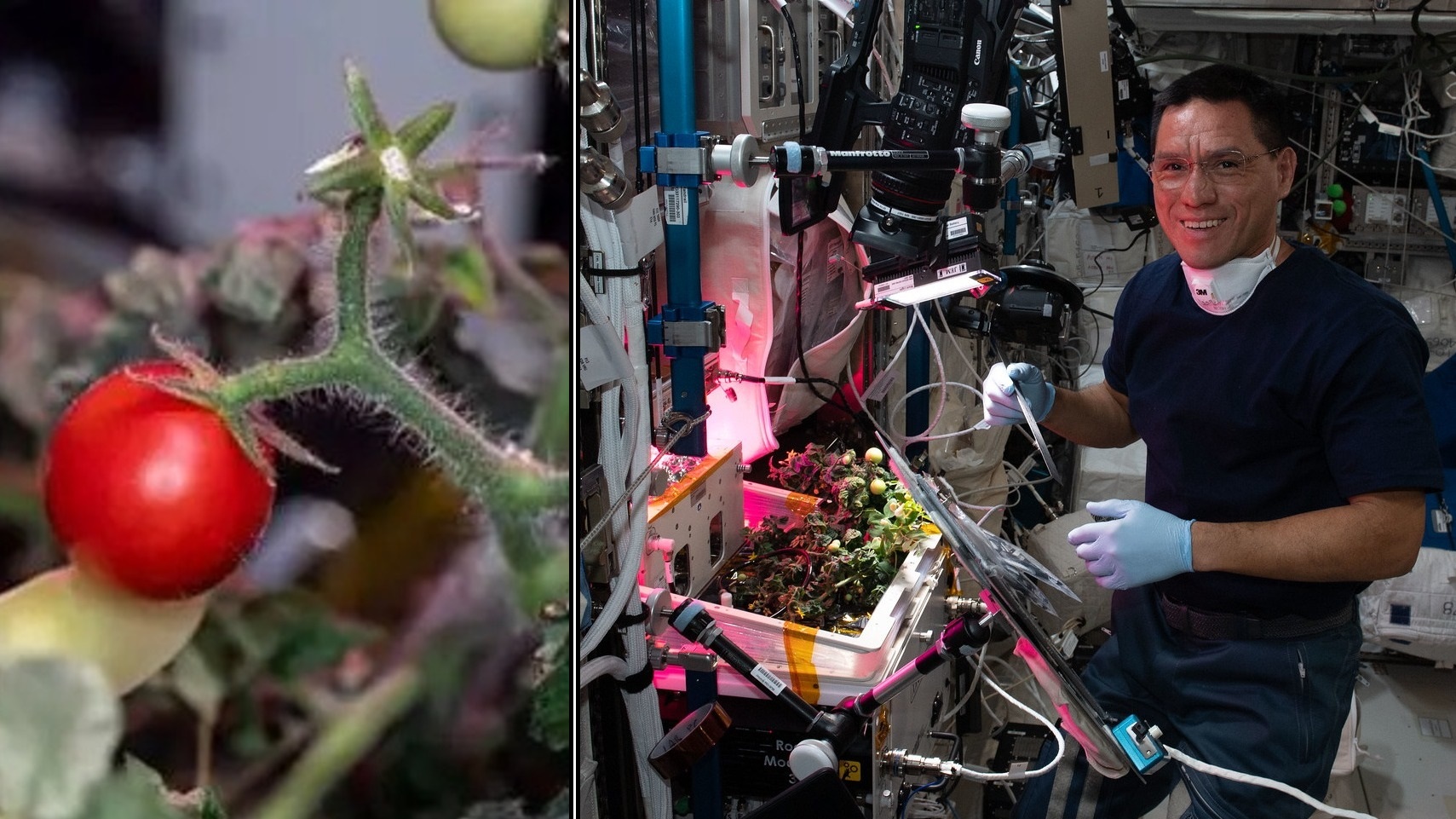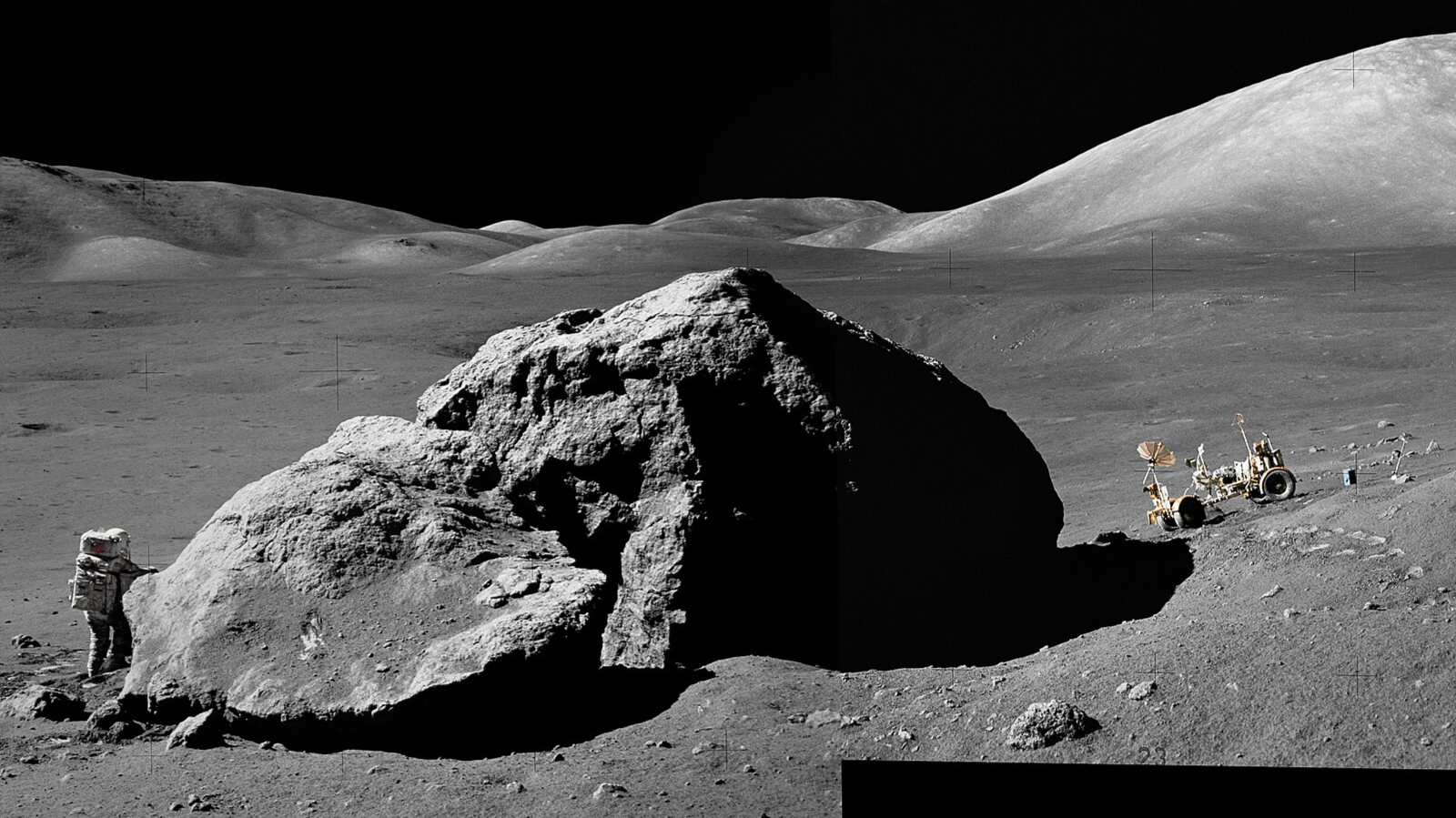ISS astronauts find tomato that was lost in space for 8 months (video)
'Our good friend Frank Rubio ... has been blamed for quite a while for eating the tomato, but we can exonerate him.'
Update, Dec. 15: NASA revealed Dec. 15 that there were two lost tomatoes, and different information about the experiment. Read more here along with images of the tomatoes.
A foodie space mystery has finally been solved.
The remains of a tiny tomato lost by NASA astronaut Frank Rubio after an off-Earth harvest in March finally showed up on the International Space Station (ISS), more than eight months later.
"Our good friend Frank Rubio, who headed home [already], has been blamed for quite a while for eating the tomato. But we can exonerate him. We found the tomato," NASA astronaut Jasmin Moghbeli said during a livestreamed event on Wednesday (Dec. 6) that celebrated the ISS' 25th anniversary.
The minor incident turned into a large inside joke for Rubio in the fall. The 1-inch-wide (2.5 centimeters) Red Robin dwarf tomato was a part of the final harvest for the Veg-05 experiment that Rubio himself had tended through some growing pains.
Each ISS astronaut received samples of the tomatoes after the March 29, 2023 harvest, but Rubio's share — stored in a Ziploc bag — floated away before he could take a bite.
Related: Track the ISS: How and where to see it
Breaking space news, the latest updates on rocket launches, skywatching events and more!

The missing tomato was first discussed publicly on Sept. 13, when Rubio had his own event in space marking an unexpected record year in orbit for a United States astronaut. (Problems with Rubio's Russian Soyuz spacecraft, which were eventually resolved with the launch of a replacement Soyuz, doubled his expected six-month stay.)
"I spent so many hours looking for that thing," Rubio joked during the ISS livestream in September. "I'm sure the desiccated tomato will show up at some point and vindicate me, years in the future."
To be fair to Rubio, the ISS is larger than a six-bedroom house, and, in microgravity, things can easily float away to unexpected corners. NASA's procedure is usually to check vent intakes, but in a station crowded with 25 years of stuff, it's easy to lose track of individual items.
Also, the tomato search did not unduly occupy his time, as Rubio's Soyuz crew performed hundreds of other science experiments (despite the stress of the delay). If anything, the situation may show more about how to deal with the unexpected when growing plants on the moon or Mars, which the Veggie series of experiments eventually aims to achieve.
Reporters asked Rubio about the lost tomato on Oct. 13, about two weeks after he safely returned home with his delayed crew (Russian cosmonauts Sergey Prokopyev and Dmitri Petelin) after 371 days in space.
He lamented that the tomato never came to light despite "18 to 20 hours of my own time looking for that." (Rubio may have been exaggerating the time spent for humor.)
"The reality of the problem, you know — the humidity up there is like 17%. It's probably desiccated to the point where you couldn't tell what it was, and somebody just threw away the bag," Rubio added, laughing. "Hopefully somebody will find it someday: a little, shriveled thing."
While the tomato was a light part of Rubio's mission, not all of it was so easy. During the same October event, Rubio spoke about how difficult it was to stay away from his wife, children and friends for so long; he has said that if he'd known he were going to end up spending a year in space, he wouldn't have asked for the mission.
But as Rubio took some time in space to absorb the news of the delay, his connections offered unconditional help for him and his family. "The community around us was just, gosh — they had so much prayers and support. It was really almost overwhelming, how much love and support we've received. So from that perspective, it made it incredibly easy."
Join our Space Forums to keep talking space on the latest missions, night sky and more! And if you have a news tip, correction or comment, let us know at: community@space.com.

Elizabeth Howell (she/her), Ph.D., was a staff writer in the spaceflight channel between 2022 and 2024 specializing in Canadian space news. She was contributing writer for Space.com for 10 years from 2012 to 2024. Elizabeth's reporting includes multiple exclusives with the White House, leading world coverage about a lost-and-found space tomato on the International Space Station, witnessing five human spaceflight launches on two continents, flying parabolic, working inside a spacesuit, and participating in a simulated Mars mission. Her latest book, "Why Am I Taller?" (ECW Press, 2022) is co-written with astronaut Dave Williams.
-
jpswimmer I could not see this in the post, so where, exactly, was the tomato found on-board and was it desiccated as expected, or did the supposedly sealed zip-lock bag prevent or reduce the desiccation process? This kind of story needs a post-recovery photo; just saying it was "found" is not enough for the curious. :cool:Reply -
chris anderson Reply
Yea. Where is it? and if was a full-grown tomato, could the seeds be viable for a 2nd generation?jpswimmer said:I could not see this in the post, so where, exactly, was the tomato found on-board and was it desiccated as expected, or did the supposedly sealed zip-lock bag prevent or reduce the desiccation process? This kind of story needs a post-recovery photo; just saying it was "found" is not enough for the curious. :cool: -
mattcoz Reply
Yeah, dessicated tomato pics or it didn't happen.jpswimmer said:I could not see this in the post, so where, exactly, was the tomato found on-board and was it desiccated as expected, or did the supposedly sealed zip-lock bag prevent or reduce the desiccation process? This kind of story needs a post-recovery photo; just saying it was "found" is not enough for the curious. :cool:
